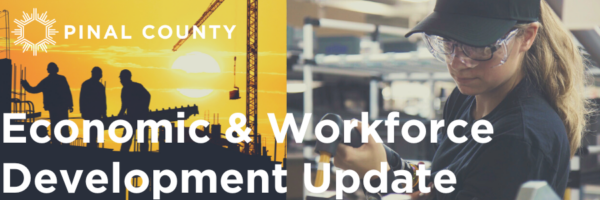
ELLIOTT D. POLLACK& Company
FOR IMMEDIATE RELEASE
February 18, 2020
The Monday Morning Quarterback
A quick analysis of important economic data released over the last week
Last week’s data was more mixed but still shows an economy that will continue to grow at a moderate, steady pace. The Blue Chip forecast panel still estimated that real GDP growth in 2020 and 2021 will be slow but stable. The panel also indicated that it believes there is a lower probability of recession this year and next than there was last month.
This is true despite significant risks created by the Coronavirus, especially in China. Worldwide, there will be economic effects from the outbreak. Some of the effects from an economic standpoint will be permanent and some will just postpone demand. But, the current thinking is that the overall effect will not be threatening the continued expansion in the U.S. Other news includes the progression of the presidential race and the outcomes of first two Democratic primaries. This has a long way to go but could, obviously, eventually have a significant impact on the economy.
In other news, consumer confidence was up and remains near a high point for this cycle. Consumer prices as measured by the CPI for all urban consumers looked higher than it has been but is still at levels that are modest by historic comparisons. And retail sales matched modest expectations. As for housing, the major affordability index remained relatively steady.
On the business side, industrial production was modestly down, mainly because of the fiasco at Boeing and the warmer than normal temperatures that reduced heating demand. And the number of job openings fell suggesting that companies are cutting the number of potential employees they are looking for rather than cutting existing employment.
At the local level, housing remains strong and while affordability was down, it remains at relatively normal levels. In addition, the supply of existing single family homes continues to diminish. Overall, the economy continues to expand.
U.S. Snapshot:
- The latest U.S. Blue Chip consensus forecast of economists calls for real GDP growth of 1.9% in 2020 and 2.0% in 2021. his follows real GDP growth of 2.3% in 2019. Thus, growth is still estimated to be slow but steady through next year. There are always risks foreseen and unforeseen. The latest worry is the Coronavirus which will cause both permanent and temporary losses to the economy until it comes under control. Despite this, forecasters sense a lower probability of recession both this year and next. During the next twelve months, the probability of recession went from 30.2% last month to 28.6% this month. For 2021, the probability went from 36.9% to 36.7%.
- The University of Michigan consumer sentiment index rose to 100.9 in February compared to 99.8 in January and 93.8 a year ago. This nearly matches the expansion peak of 101.4 set two years ago in March 2018. This occurred despite the threat of Coronavirus and the focus on the presidential election that is likely to focus on vast changes to taxes and spending programs. Only 7% of respondents to the survey mentioned the virus and only 10% mentioned the upcoming election as concerns.
- The consumer price index for all urban consumers rose 0.1% in January compared to December. The index now stands 2.5% over a year ago. All items less food and energy stands 2.3% above a year ago. Shelter and medical care components rose most rapidly. While the index rose more rapidly than any time since the fall of 2018, it is still well under control. In addition, the FED’s preferred measure of inflation is the deflator for personal consumption expenditures less food and energy. This measure remains stuck at about 1.6%.
- The number of job openings fell to 6.4 million in December; this is down from 6.8 million in November and 7.5 million a year ago. This is still a very high number by historic standards. It seems to indicate that employers are cutting back on the number of employees they need to hire but are not cutting back on the number of employees they presently employ.
- Industrial production declined 0.3% in January relative to December. It is now down 0.8% from a year ago. The key takeaway from the report is that the weakness in production stemmed largely from a drop in production at Boeing and warmer than normal temperatures that reduced heating demand and weighed on the output of utilities.
- Retail sales increased 0.3% in January when compared to December. They are up 4.4% over a year ago. This matched modest expectations. The report indicated continued consumer strength.
- The National Association of Homebuilder housing opportunity index was essentially flat in the 4th quarter when compared to the 3rd quarter. The index fell to 63.2 from 63.6. A year ago, the index stood at 56.9. The higher the index, the more people can afford the median priced home.
Arizona Snapshot:
- Permits for new single family homes in Greater Phoenix rose to 2,176 in January. That’s up 14.9% from year earlier levels of 1,893 permits.
- The NAHB housing opportunity index for Greater Phoenix fell to 64.9 in the 4th quarter. That compares to 68.0 in the 3rd quarter and 56.4 a year ago. The decline was due to increasing home prices in the area. In Greater Tucson, the index fell modestly from 71.2 to 72.9. A year ago, it was 65.4.
- Total listings in Great Tucson fell 30.1% in January when compared to year earlier levels. They fell 4.9% from the December level of 2,206. This indicates a very tight resale market in the Old Pueblo. The median sales price in the area in January stood at $245,000 compared to $232,900 a year ago.
About EDPCo
Elliott D. Pollack & Company (EDPCo) offers a broad range of economic and real estate consulting services backed by one of the most comprehensive databases found in the nation. This information makes it possible for the firm to conduct economic forecasting, develop economic impact studies and prepare demographic analyses and forecasts. Econometric modeling and economic development analysis and planning are also part of our capabilities. EDPCo staff includes professionals with backgrounds in economics, urban planning, financial analysis, real estate development and government. These professionals serve a broad client base of both public and private sector entities that range from school districts and utility companies to law firms and real estate developers.
For more information, contact –
Elliott D. Pollack & company
7505 East Sixth Avenue,
Suite 100
Scottsdale, Arizona
85251
480-423-9200 Website | Twitter
| Facebook











